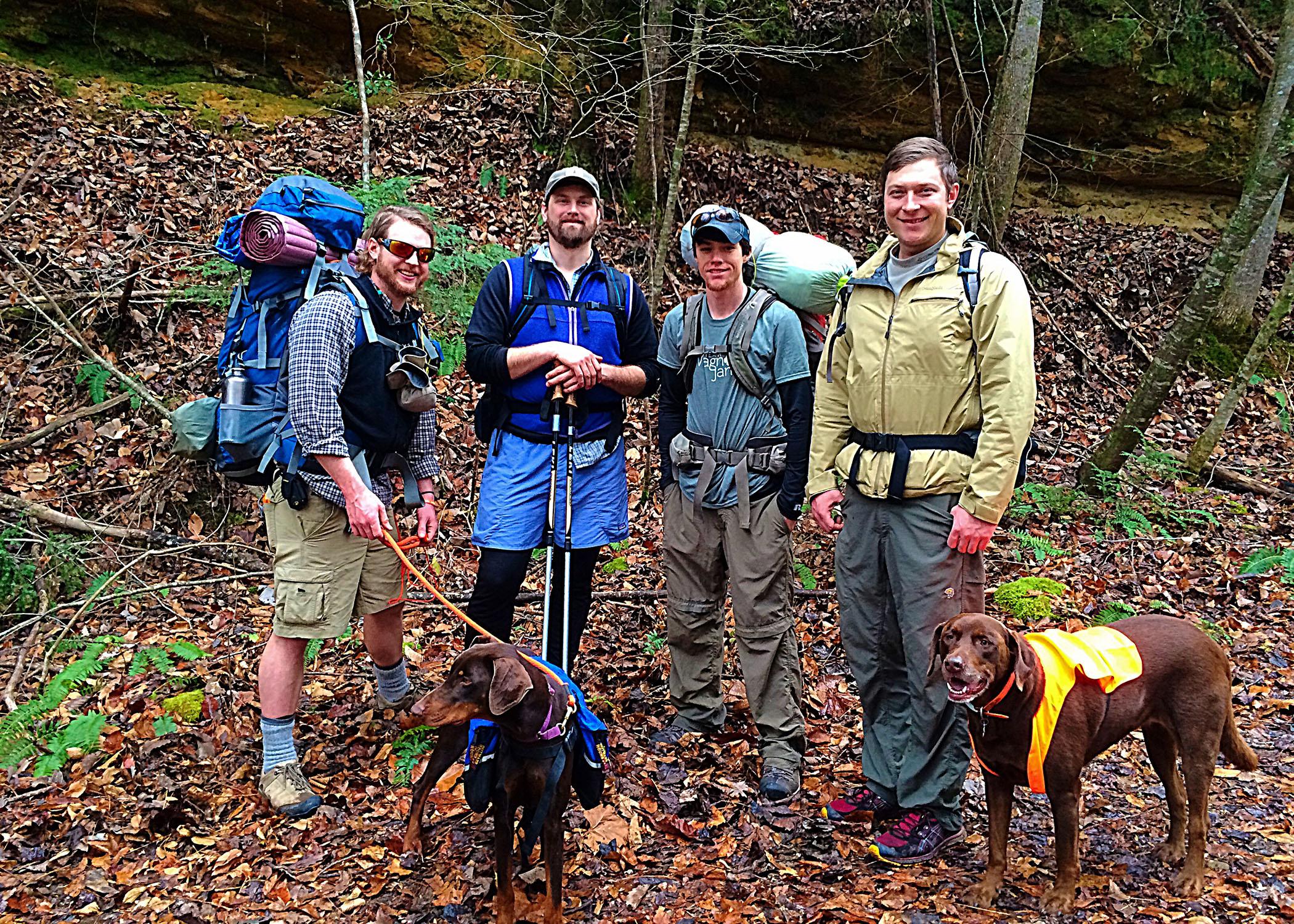Information Possibly Outdated
The information presented on this page was originally released on March 6, 2015. It may not be outdated, but please search our site for more current information. If you plan to quote or reference this information in a publication, please check with the Extension specialist or author before proceeding.
Don't let cold weather prevent outdoor fun
STARKVILLE, Miss. -- For many Mississippians, this is the least likely time of the year to venture outside to explore. Some feel it is much too cold and others feel it is too wet, but for a lover of the outdoors, this is a perfect time of year to hit the trail.
It all comes down to being prepared for your outing and keeping a positive mental attitude.
Growing up in a climate much colder than the one Mississippi offers, I learned a very valuable skill to help cope with undesirably cold weather: layering. When we think of layers, some of us think of Shrek and his analogy involving ogres and onions. In the movie, Shrek tells his friend, Donkey, that Ogres are like onions; they have layers. For me, there is some truth to his wisdom, but it involves clothes properly placed on the body to maintain comfort on colder days.
Before I venture outside, I make sure that I have on a pair of warm socks. I prefer wool blends with mostly wool for comfort and warmth. The first reason is obvious, especially if you have walked any amount of distance in a pair of uncomfortable socks.
The second reason comes from the fact that wool maintains its ability to trap heat and keep you warm even when it is wet. That is a very desirable trait when the weather is cool and moist. Wool also helps wick moisture away from the body, which helps reduce chaffing and blisters. Cotton does a horrible job of keeping us warm when wet, which is why I shy away from it as a layering option.
Many people like to wear hiking boots, but that may not always be necessary. At the very least, you should wear a pair of comfortable shoes. Choose a pair that can get dirty without upsetting you. If you are new to hiking, or you have a tendency to roll your ankles, a pair of hiking boots that covers your ankles may be a good option to provide extra support on uneven terrain.
On the coldest days, a base layer is important. Wool long underwear is great, but it can get a little expensive. Polypropylene long underwear is an excellent, less expensive option. Just like wool, it helps trap heat and wick moisture. Depending on the temperature and how cold you get, you can top the long underwear with shorts, pants or overalls.
Over that layer, wear a tucked-in T-shirt to shield the wind. Add a long-sleeved shirt tucked in to help maintain a nice core temperature, along with a warm jacket to block the wind or elements. On really cold days, a vest under the jacket will help trap extra heat. Hats and gloves also trap a lot of heat.
While hiking, you may work up a sweat from all the heat you are generating and trapping. Part of the reason for layering is so that you can remove articles when you get too warm but still maintain a good temperature overall. It is important to not get sweaty and wet the base layer. Damp layers can cool you too much, leading to hypothermia.
Now that we have clothing covered, we should consider the specific needs required for the outdoor activity we plan to do. Always bring a compass, a map of the area and enough water for your journey. Be sure someone at or around home knows of your plans in case you do not return on schedule. For day hikes, I carry a backpack with a map, a compass, snacks, water, a cutting tool, fire-building materials, a hammock and straps, and a means to signal for help if I need it. You can also bring binoculars, a camera, a journal or wildlife/plant identification books.
Practice the Leave-No-Trace philosophy, which means if you brought it out on the adventure, take it back with you. Take nothing but pictures; leave nothing but footprints. Bury and cover any waste you produce when using the bathroom, which you should do at least 100 yards away from water sources to avoid contamination.
Mississippi has hundreds of thousands of acres of public land to explore. From local and state parks to national areas, such as the Sam D. Hamilton Noxubee Wildlife Refuge, outdoor recreation abounds. Check with the welcome centers, websites or ranger stations for maps of these areas before heading to the forest for recreation. If you bring a pet or are outside during a hunting season, make sure you follow the rules of the area. Wearing bright orange makes you visible at a distance to hunters and other people enjoying the outdoors.
It’s chilly this time of the year, but when you are properly prepared, you can still have a very enjoyable time exploring Mother Nature’s natural wonders close to home.

Editor’s Note: Extension Outdoors is a column authored by several different experts in the Mississippi State University Extension Service.







